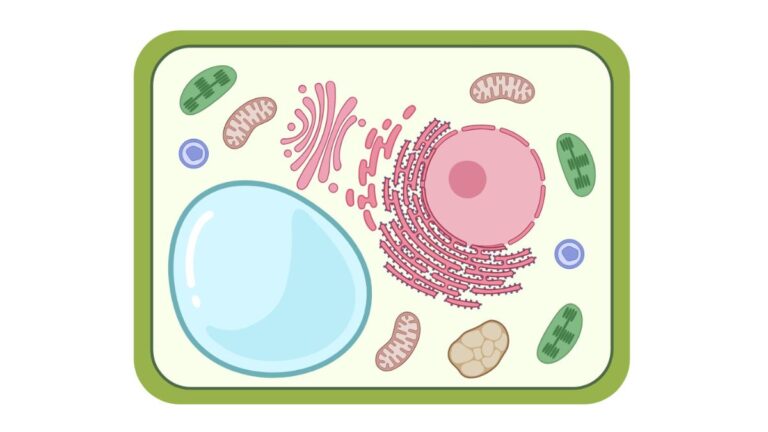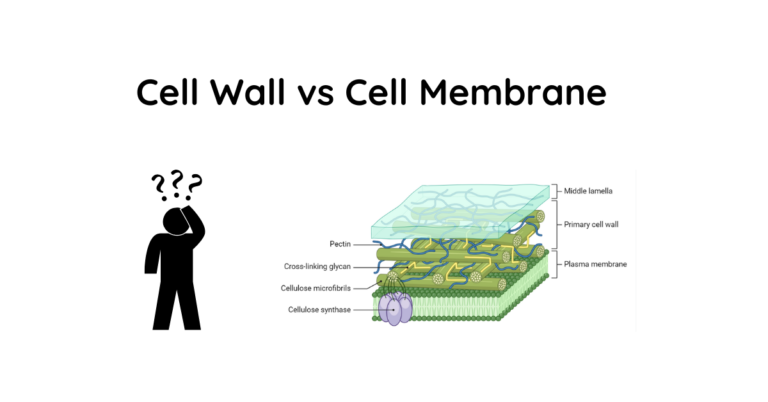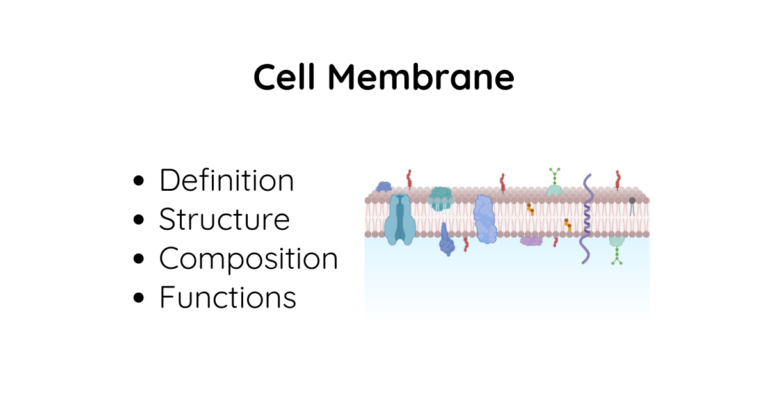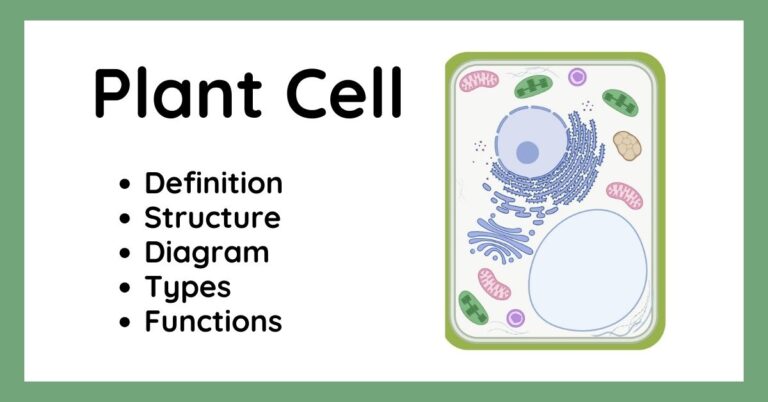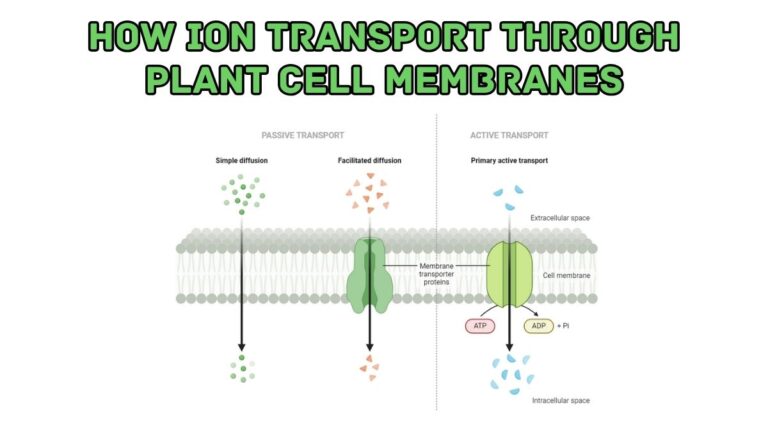How Cell Wall Is Formed In Plant Cells?
During cell division, a structure called the cell plate is formed from Golgi-derived vesicles containing cell wall materials like cellulose, hemicellulose, and pectin. The cell plate expands outward and eventually fuses with the existing cell wall, separating the two daughter cells and forming the new primary cell wall between them. As the cell matures, some plant cells deposit a thicker, stronger secondary cell wall inside the primary wall, containing more cellulose microfibrils, different hemicelluloses, and lignin for added rigidity.
What Is Cell Wall?
The cell wall is a crucial component of plant cells, providing structural support, protection, and regulating various cellular processes. Its formation is a complex and dynamic process that occurs during cell division and growth. In this article, we will explore the intricate mechanisms involved in the formation of the cell wall in plant cells.
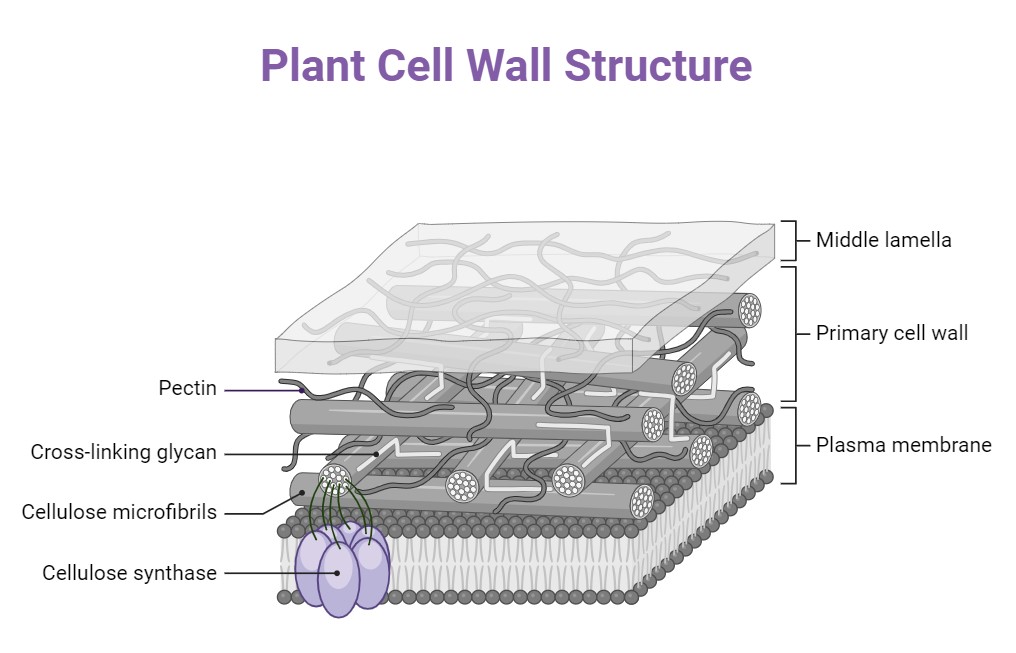
The table in below describes the steps involved in how cell walls are formed in plants:
| Stage | Description |
|---|---|
| Cell Division and Cell Plate Formation | -Cell plate formed from Golgi vesicles during cytokinesis. -Expands outward guided by phragmoplast microtubules. -Fuses with existing cell wall, separating daughter cells. |
| Primary Cell Wall Formation | -Newly formed cell wall after division. -Thin, flexible; cellulose, hemicellulose, pectin, proteins. -Cellulose synthase complexes extrude microfibrils. |
| Secondary Cell Wall Formation | -Thicker, more rigid wall inside primary wall. -More crystalline cellulose, different hemicellulose, lignin. -Provides mechanical support in specialized cells. |
| Cell Wall Modifications and Remodeling | -Continuous modifications throughout plant life cycle. -Enzymes like expansins, XTHs, pectinases modify components. -Allows growth, differentiation, environmental responses. |
Cell Division and Formation Of The Cell Plate
The formation of the cell wall begins during cell division, specifically during the process of cytokinesis. As the parent cell divides, a structure called the cell plate is formed, which serves as the precursor to the new cell wall.
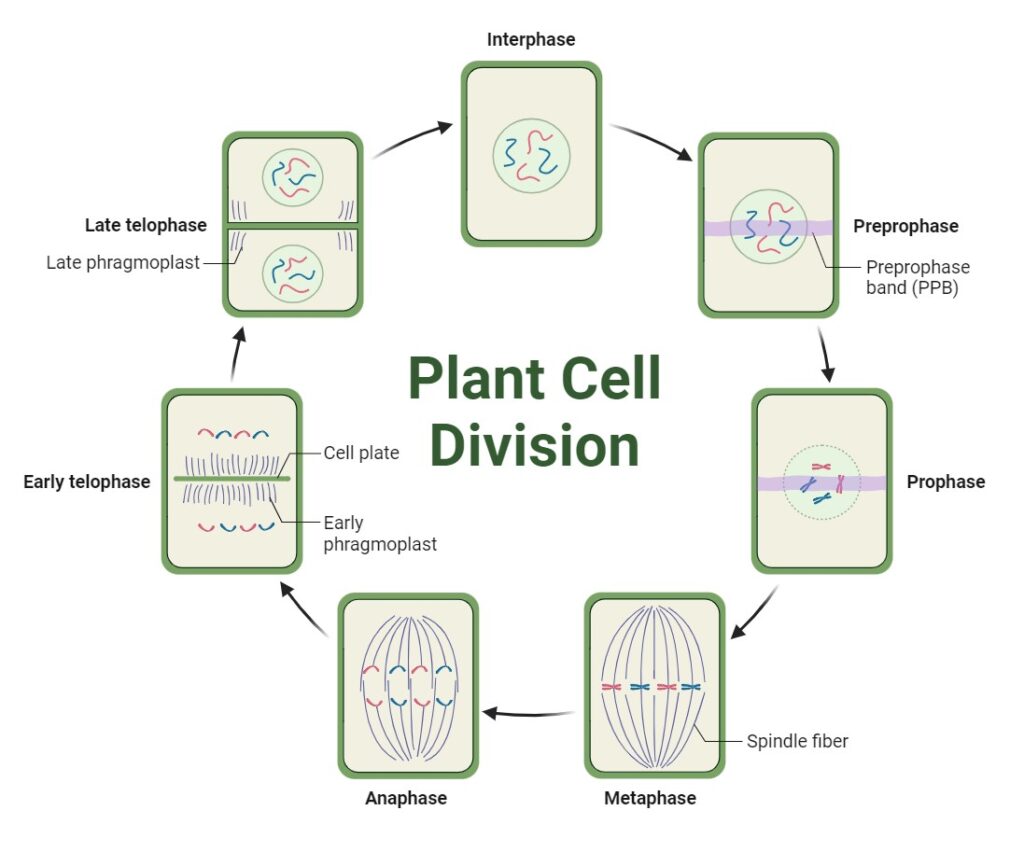
The cell plate is assembled from vesicles derived from the Golgi apparatus. These vesicles contain cell wall materials, such as cellulose, hemicellulose, and pectin. The vesicles fuse together in the center of the dividing cell, forming a thin, disc-like structure called the phragmoplast.
The phragmoplast is composed of two sets of parallel microtubules arranged in an antiparallel fashion, with their plus ends facing the center of the cell. These microtubules act as tracks for the movement and fusion of the Golgi-derived vesicles, facilitating the expansion of the cell plate outward from the center towards the existing cell wall.
As the cell plate grows, it eventually fuses with the existing cell wall, completing the separation of the two daughter cells and forming the new cell wall between them.
Primary Cell Wall Formation
After cell division, the newly formed cell wall is called the primary cell wall. This initial layer is thin and flexible, allowing for cell expansion and growth.
The primary cell wall is composed of the following main components:
Cellulose microfibrils
Long, unbranched chains of glucose molecules that provide structural strength and rigidity to the cell wall.
Hemicellulose
Branched polysaccharides that cross-link with cellulose microfibrils, contributing to the overall strength and flexibility of the cell wall.
Pectin
A complex polysaccharide that forms a gel-like matrix, providing adhesion between cells and regulating cell wall porosity.
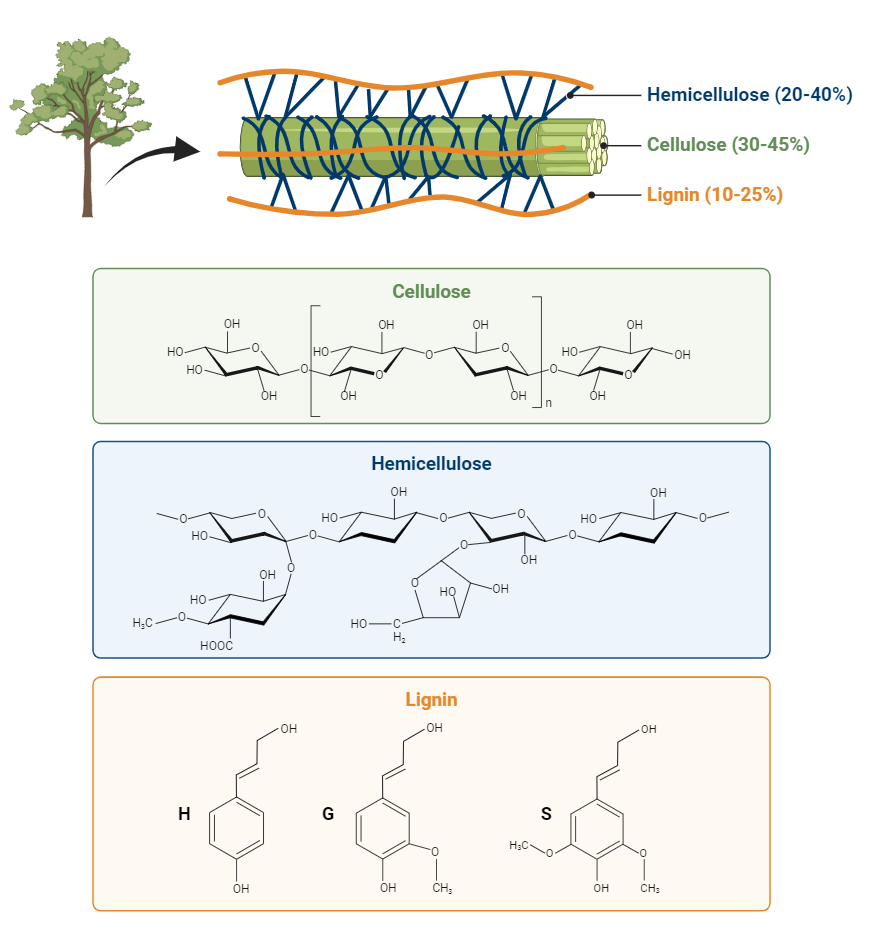
Structural proteins
Proteins that interact with the polysaccharide components, contributing to the overall structure and function of the cell wall.
The synthesis and deposition of these components are tightly regulated processes involving various enzymes and protein complexes. For example, cellulose synthase complexes (CSCs) are responsible for the synthesis and extrusion of cellulose microfibrils at the plasma membrane.
The orientation of the cellulose microfibrils is guided by the cortical microtubules present in the cytoplasm. These microtubules serve as tracks for the movement and positioning of the CSCs, ensuring the proper alignment of the cellulose microfibrils within the cell wall.
Secondary Cell Wall Formation
As plant cells mature and differentiate, some cells undergo further cell wall modifications by depositing a secondary cell wall inside the primary cell wall. This secondary layer provides additional strength and rigidity to the cell, enabling it to perform specialized functions.
The secondary cell wall is typically thicker and more complex than the primary cell wall. Its composition varies depending on the cell type but generally includes:
Cellulose microfibrils
Similar to the primary cell wall but with a higher degree of crystallinity and organization.
Hemicellulose
Different types of hemicellulose, such as xylan and glucomannan, are present in the secondary cell wall.
Lignin
A complex phenolic polymer that is deposited between the cellulose microfibrils, providing rigidity and hydrophobicity to the cell wall.
The deposition of the secondary cell wall is a highly regulated process involving various enzymes and transcription factors. It is often associated with the differentiation of specific cell types, such as xylem vessels and fibers, which require increased mechanical strength and water transport capabilities.
Read About: Difference Between Cell Wall And Cell Membrane
Cell Wall Modifications and Remodeling
The cell wall is not a static structure; it undergoes continuous modifications and remodeling throughout the plant’s life cycle. These modifications are essential for various processes, including cell growth, differentiation, and responses to environmental cues and stresses.
Cell wall remodeling involves the action of various enzymes, such as:
Expansins
Proteins that disrupt the non-covalent interactions between cellulose microfibrils and other cell wall components, allowing for cell wall loosening and expansion during growth.
Cell wall-modifying enzymes
Enzymes like xyloglucan endotransglucosylase/hydrolases (XTHs), pectinases, and cellulases that can modify or degrade specific cell wall components, facilitating cell wall remodeling.
Peroxidases and laccases
Enzymes involved in the cross-linking and lignification of the cell wall, contributing to its rigidity and strength.
These enzymes are regulated by various signaling pathways and transcription factors, allowing plants to respond to developmental cues, environmental stresses, and pathogen attacks by modifying their cell walls accordingly.


